Math can be a daunting subject for many students, especially those who find themselves falling behind. Teachers and educators know that effective math intervention is crucial to ensuring every student succeeds. But with the increasing pressure to meet learning targets and the diverse needs of students, how can teachers provide the right support?
The key is to mix and match math intervention strategies to meet individual student needs and create an inclusive learning environment. The more tools an educator has at their disposal, the better they can address the varying levels of proficiency and learning styles in their classroom. Whether it’s using personalized feedback, interactive tools, or targeted teaching methods, having a wide range of approaches will ensure that no student is left behind.
In this blog, we’ll dive into various math intervention strategies and how leveraging interactive tools and AI-powered solutions can make a real difference in your classroom.
What Is Math Intervention?
Math intervention involves targeted instructional practices aimed at helping students who are struggling with math concepts. These interventions are designed to provide additional support, whether it’s through individualized attention, specialized programs, or using tools to enhance learning.
Effective math intervention addresses specific areas of weakness, such as understanding basic operations, improving problem-solving skills, or developing a deeper understanding of mathematical concepts. The goal is not only to help students catch up but also to build their confidence.
Check out our curated list of 23 Proven Math Teaching Strategies to Foster a Love for Math!
Common Challenges in Math Intervention
Math intervention strategies may be challenging to implement effectively due to:
- Large class sizes make it difficult to provide one-on-one support.
- Diverse student needs require differentiated strategies.
- Time constraints can leave less room for targeted intervention.

Despite these challenges, math intervention remains an essential component of improving student outcomes in mathematics. With technology and AI-powered tools, educators can personalize learning, automate repetitive tasks, and provide real-time feedback, making it easier to implement math interventions even in the most challenging environments.
1. Early Identification and Diagnostic Assessment
Early intervention is key to helping students before they fall too far behind. By using diagnostic assessments, teachers can identify students’ strengths and weaknesses and provide targeted support. Technology can help by quickly analyzing student responses and pinpointing areas of difficulty, allowing for immediate interventions.
How to Implement with Technology:
Diagnostic assessments can be administered using platforms like Google Forms or EdTech tools that provide instant results. During class, use tools like ClassPoint to get real-time feedback so you know how to adjust the lesson or which students may need more help after class.
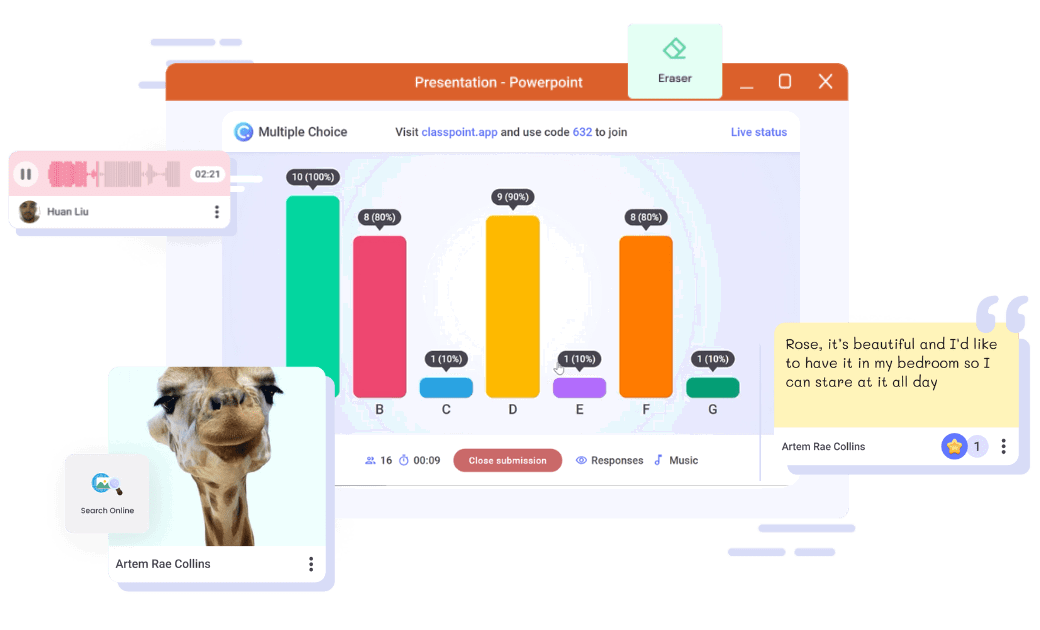
2. Small Group Instruction
Small group sessions allow for more focused, individualized instruction, where teachers can address specific student needs and provide tailored support. This setup fosters better engagement and encourages more direct interaction with the teacher.
How to Implement with Technology:
Separate students into similar knowledge-level groups, or use digital tools such as Zoom or Google Meet for virtual classrooms. For in-person lessons, ClassPoint enables teachers to group students and embed interactive math problems directly into PowerPoint slides.
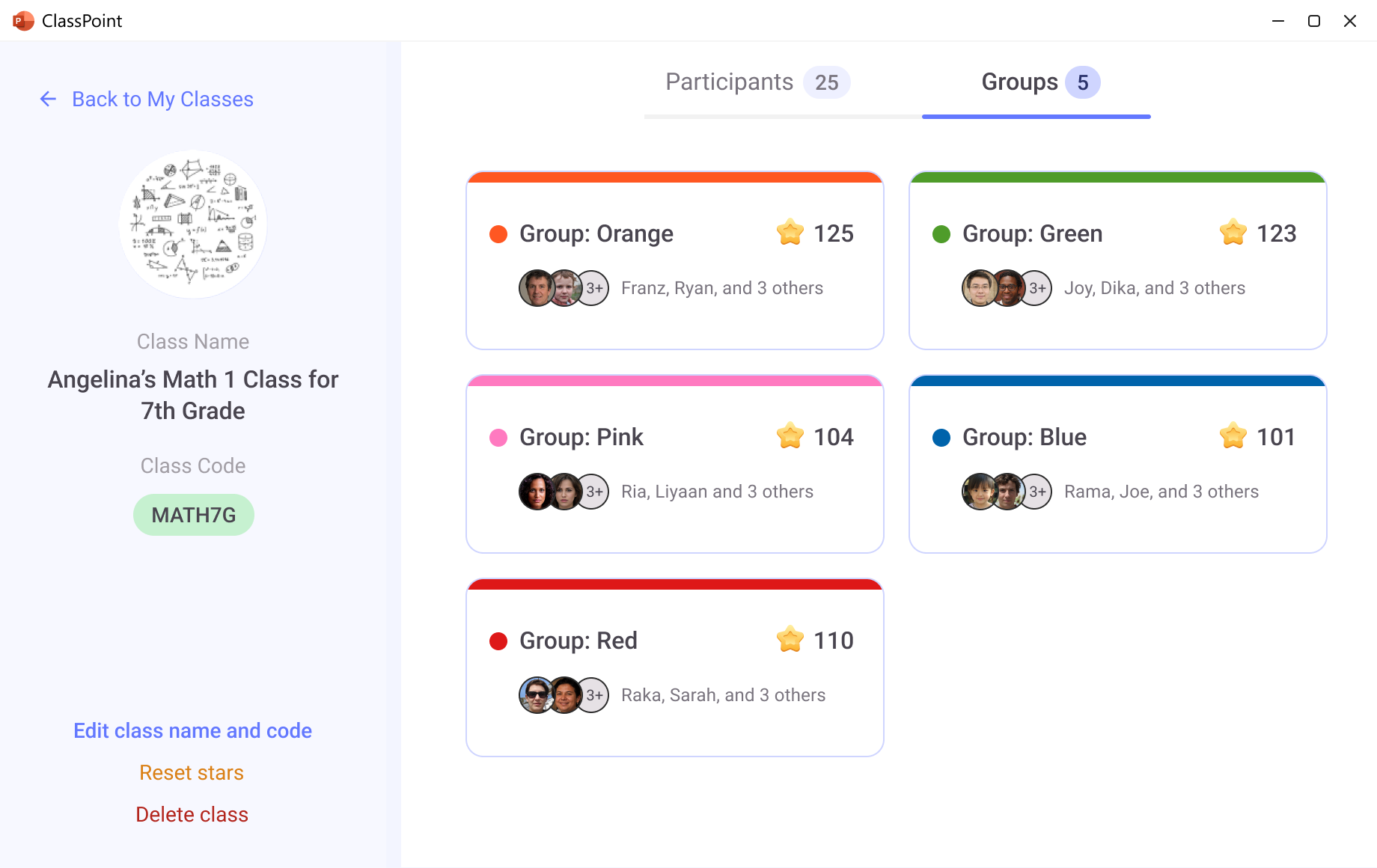
3. Differentiated Instruction
Each student learns differently. By offering varied tasks, resources, and levels of support, teachers can meet these diverse needs more effectively.
How to Implement with Technology:
Technology can help create different levels of difficulty for various tasks. AI can help you adjust your content for various learning levels in your classroom. Edcafe AI can help create summary notes or even differentiated chatbots so students can chat with the AI in a safe, monitored environment with their own questions.
4. Frequent Formative Assessments
Regular assessments give teachers immediate feedback on student progress and allow for timely interventions. These can be low-stakes quizzes or brief activities to gauge understanding.
How to Implement with Technology:
Quiz platforms like Google Forms, ClassPoint, or Edcafe AI can be used to conduct quick formative assessments. With ClassPoint, teachers can insert multiple-choice, short-answer, or slide-drawing questions for math and instant assessments in PowerPoint slides, allowing for live responses and quick feedback.
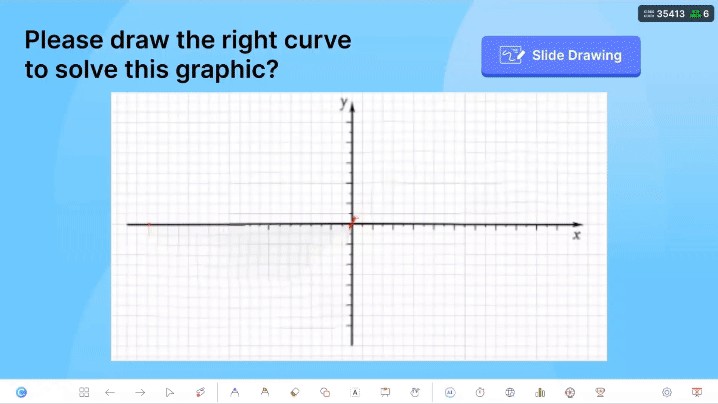
Edcafe AI can also help automate the creation and grading of formative assessments based on any lesson information you already have.
5. Peer Tutoring and Collaboration
Peer tutoring encourages students to teach each other, reinforcing their own understanding while helping classmates. This collaborative learning strategy can be highly effective in math.
How to Implement with Technology:
Tools like Google Docs or Padlet are excellent for facilitating collaborative work and peer review. With these platforms, students can work together on math problems, share solutions, and give each other feedback, whether in the classroom or remotely.
6. Visual Learning Tools
Visual aids can help students better understand abstract math concepts. Diagrams, charts, and visual problem-solving can make learning more accessible, particularly for visual learners.
How to Implement with Technology:
Software like PhET Simulations or GeoGebra allows students to visualize and solve math problems graphically. During your PowerPoint lessons with ClassPoint, you can also annotate on slides, add whiteboards when needed, and drag-and-drop objects to help illustrate problems.
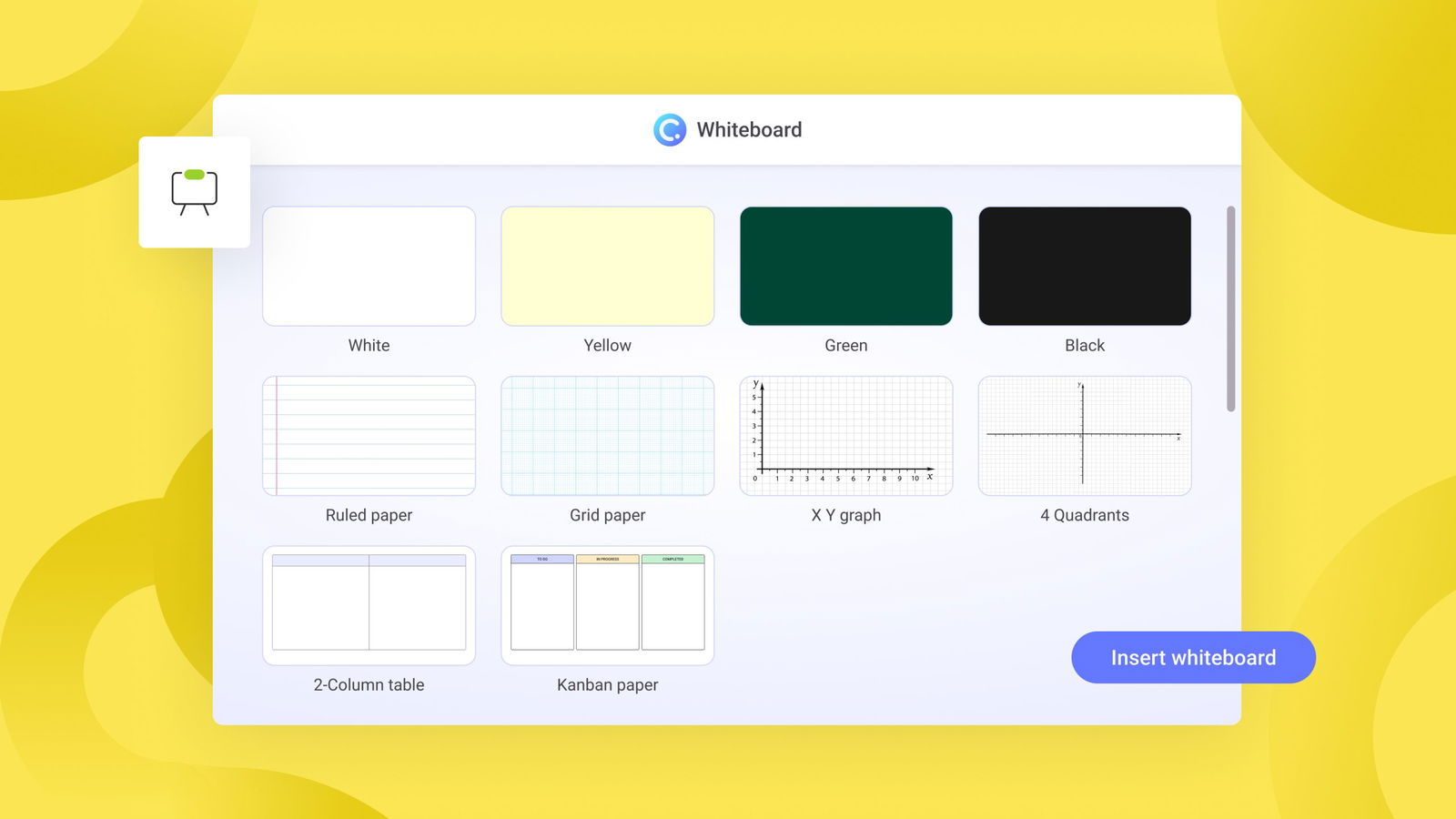
7. Behavioral Interventions and Motivation
Providing positive reinforcement and creating an encouraging classroom environment can help motivate students who struggle with math. Offering rewards for progress, such as praise or small incentives, can keep students engaged.
How to Implement with Technology:
Digital reward systems and gamified platforms like ClassPoint can help motivate students. With ClassPoint, teachers can create competitive math games where students earn stars for correct answers, motivating them to keep participating and watch as they climb the leaderboard.
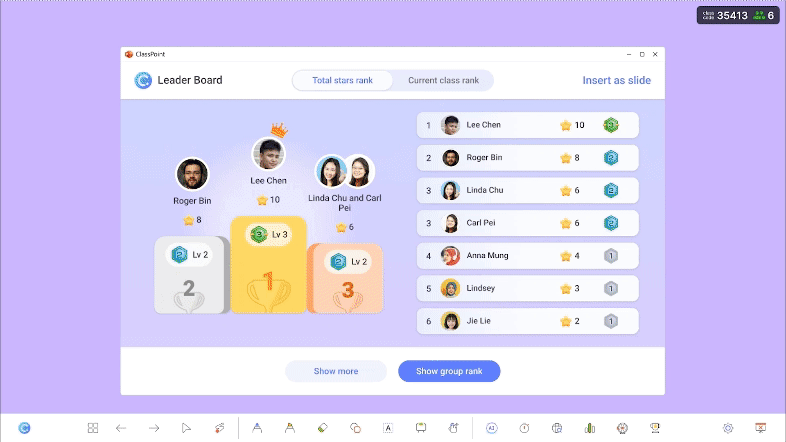
8. Scaffolded Learning
Scaffolding involves breaking down learning into smaller, more manageable steps and gradually increasing the difficulty as students gain mastery.
How to Implement with Technology:
Use technology to provide step-by-step instructions for students, gradually increasing the complexity of tasks. With AI chatbots like those in Edcafe AI, teachers can guide students through multi-step math problems or concepts. The chatbot can provide hints, ask guiding questions, or break down the solution process into manageable chunks, adapting based on the student’s responses.
9. Individualized Math Plans
Some students require a more tailored approach to learning math. By creating individualized plans, teachers can address specific challenges and provide the support needed for each student’s success.
How to Implement with Technology:
Tech tools can help create individualized learning plans, using data-driven insights to ensure personalized support. Edcafe AI allows teachers to customize lessons according to each student’s progress and learning needs. Plus, it can add articles, videos, or worksheets to share with students for extra practice.

10. Conceptual Understanding before Procedural Fluency
Focusing on ensuring that students understand the underlying concepts of math before asking them to memorize and apply procedures. This foundational understanding helps students retain and apply their math knowledge more effectively.
How to Implement with Technology:
Teachers can use AI-generated explanations, examples, and visuals to help students understand the “why” behind mathematical procedures before moving on to procedural fluency. To reinforce understanding, ClassPoint quiz questions can be added to run interactive classroom activities where students apply the concepts they’ve learned.
11. Guided Practice
Teachers provide direct guidance while students work through math problems. This hands-on approach allows for real-time feedback and clarification of misunderstandings.
How to Implement with Technology:
With ClassPoint, teachers can guide students through problems step-by-step, using interactive features like the whiteboard tool to highlight key steps in the process. This allows teachers to visually walk students through the solution, drawing attention to important concepts and strategies in real-time.
12. Representations
Using concrete and semi-concrete representations supports students’ learning of mathematical concepts and procedures.
How to Implement with Technology:
Leverage virtual manipulatives and interactive whiteboards to present mathematical concepts visually. Tools like ClassPoint allow you to set up draggable objects in your PowerPoint to visually show movement, rotations, and more with shapes, texts, and images.
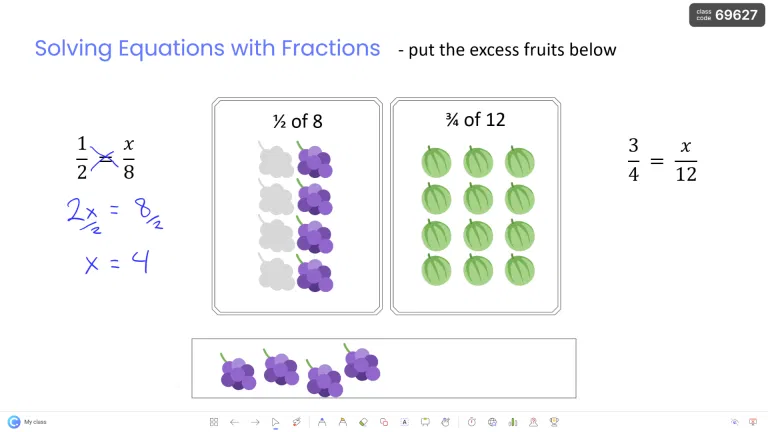
13. Word Problems
Teaching students to solve word problems helps deepen their mathematical understanding and supports their ability to apply mathematical ideas.
How to Implement with Technology:
Use AI tools to generate customized word problems that align with students’ interests and current learning levels. Customizing word problems to reflect students’ interests can make these problems more engaging and meaningful. Edcafe AI can generate personalized word problems that are appropriate for individual student needs, with short-answer questions in the quiz.
Or, use ClassPoint AI to generate questions based on your info.
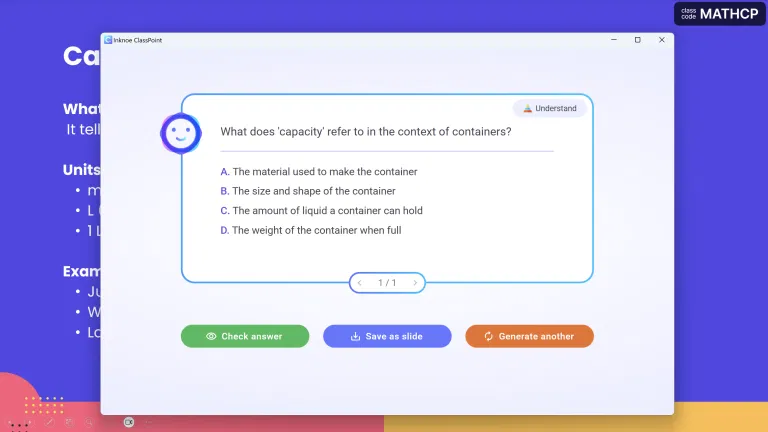
14. Error Analysis
Encouraging students to examine and correct their own mistakes is a crucial aspect of math learning. By reflecting on errors and understanding why they occurred, students can develop stronger problem-solving skills and a deeper understanding of the mathematical concepts.
How to Implement with Technology:
ClassPoint offers a great way for students to engage in error analysis through Short Answer questions. After students attempt a math problem, they can be prompted with a follow-up short answer question that asks them to reflect on their work.
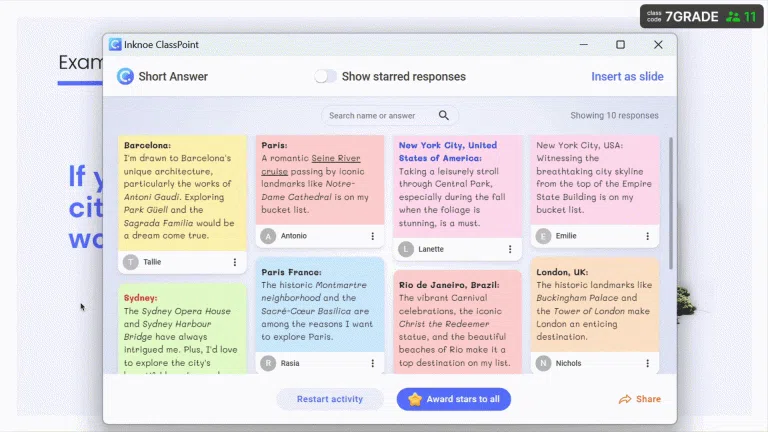
15. Math Games
Incorporating educational games into lessons makes math practice more engaging and allows students to reinforce their skills in a fun and interactive way. Math games are effective for both reinforcing concepts and motivating students to practice, as they can experience learning in a less traditional, more enjoyable format.
How to Implement with Technology:
Platforms like IXL and Prodigy offer excellent interactive math games with comprehensive assessments and personalized learning paths. IXL adapts to each student’s individual level, ensuring that they are always challenged at the appropriate pace while reinforcing key concepts.
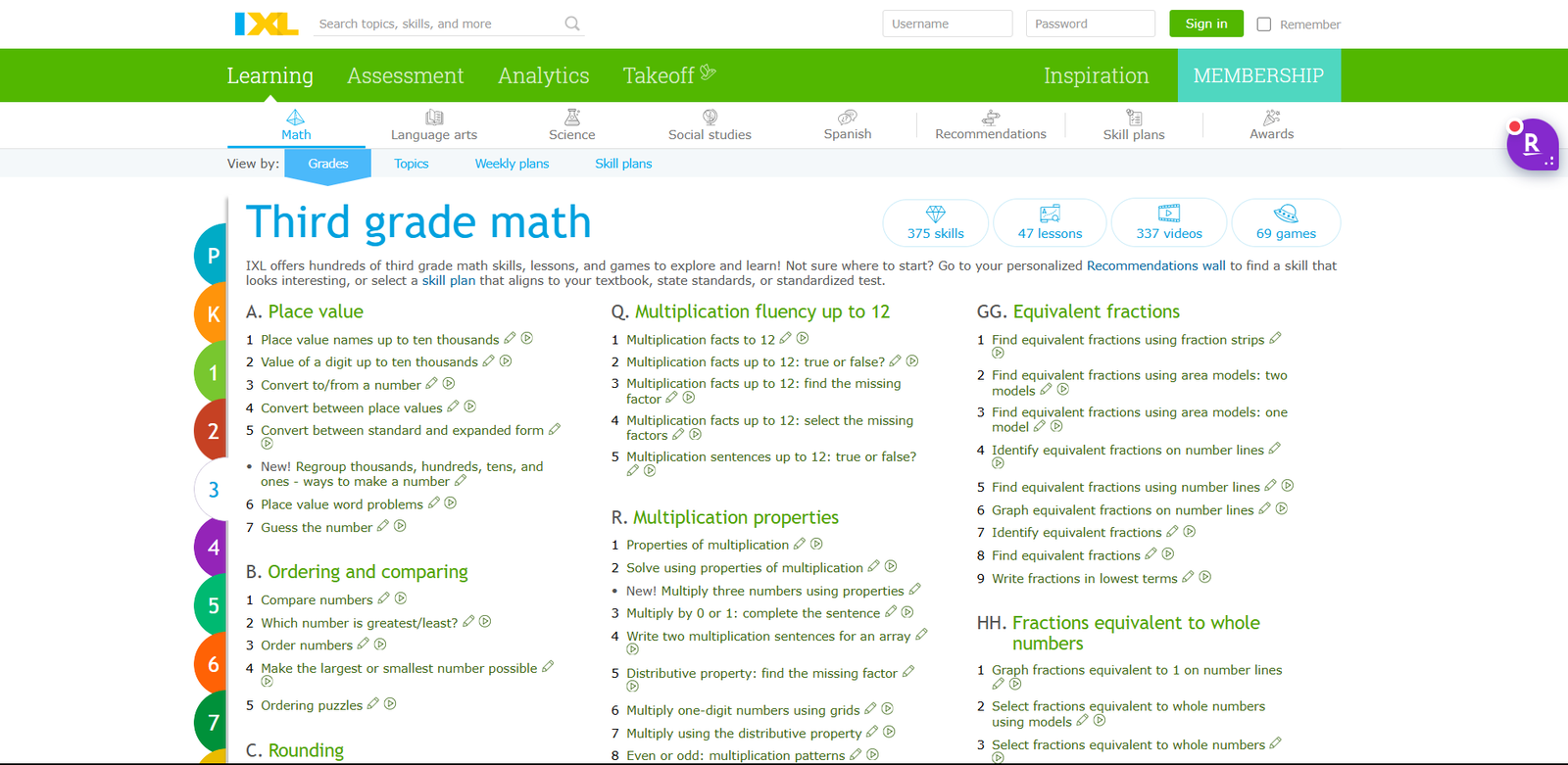
How AI Enhances Math Intervention
AI-powered tools significantly improve the efficiency and effectiveness of math interventions. Here’s how AI can make a tangible difference in your math intervention strategies:
- Personalized Learning Paths: AI can help to adapt lessons to each student’s needs, ensuring appropriate support for all proficiency levels.
- Real-Time Feedback: AI provides instant feedback, helping students quickly identify and correct mistakes to reinforce learning.
- Scalable Solutions for Large Classrooms: AI automates assessments and feedback, allowing teachers to support all students, even in large classes.
- Automated Progress Monitoring: AI tracks student progress, helping teachers identify trends and adjust lessons accordingly.
- Gamified Learning and Engagement: AI-powered games and quizzes motivate students and reinforce key concepts in a fun, interactive way.
- AI as a Teaching Assistant: AI handles repetitive tasks like grading and feedback, freeing up time for teachers to provide personalized support..
Intervening early and providing personalized, targeted math instruction can make a significant difference for struggling students.
By incorporating these 15 math intervention strategies and leveraging tools like ClassPoint and Edcafe AI, teachers can create a more dynamic, efficient, and effective learning environment. Whether it’s through small group work, differentiated instruction, or AI-powered feedback, these strategies will help every student reach their full potential in math.
Ready to boost your math intervention efforts? Try ClassPoint and explore the power of Edcafe AI to personalize learning and make a big impact in your classroom.
